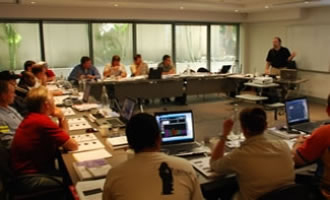 The combination of reliability improvement (through precision maintenance practices), condition monitoring, and root cause failure analysis provides the best all-round approach to reducing maintenance costs and improving
The combination of reliability improvement (through precision maintenance practices), condition monitoring, and root cause failure analysis provides the best all-round approach to reducing maintenance costs and improving
Delivered in a two days (or three if appropriate), it is possible to give people are more thorough understanding o these important topics. This course is ideal for Reliability Engineers and Condition Monitoring program leaders.
Duration: 2 days (3 if appropriate)
Course Description: Download the full course outline ![]()

.jpg) SPM Instrument, Sweden, leading worldwide provider of condition monitoring technology and products, now announces the arrival of Intellinova Compact, the latest addition to the successful Intellinova family of products for online condition monitoring of rotating machinery.
SPM Instrument, Sweden, leading worldwide provider of condition monitoring technology and products, now announces the arrival of Intellinova Compact, the latest addition to the successful Intellinova family of products for online condition monitoring of rotating machinery. Intellinova Compact, the most recent addition to the Intellinova family of online systems, has attracted much attention from windpower and other industries and SPM now announces its first order for the system.
Intellinova Compact, the most recent addition to the Intellinova family of online systems, has attracted much attention from windpower and other industries and SPM now announces its first order for the system.


